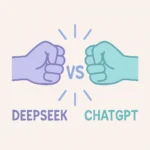Artificial Intelligence Acronyms Here is a continuation of the acronyms sorted alphabetically.
In case you missed Artificial Intelligence Acronyms Part One, I linked it.

- Maximum A Posteriori (MAP): refers to a statistical estimation technique used in Bayesian inference. It calculates the mode of the posterior distribution, which represents the most probable value of a parameter given the observed data and prior beliefs. MAP estimation balances prior knowledge with the likelihood of observed data, providing a point estimate that maximizes the posterior probability.
- Markov Chain Monte Carlo (MCMC): is a class of algorithms used to sample from probability distributions based on constructing a Markov chain. The chain’s stationary distribution approximates the target distribution. MCMC methods are useful for estimating complex distributions and performing probabilistic inference, particularly in Bayesian statistics.
- Machine Learning (ML): is a field of artificial intelligence that involves the development of algorithms and statistical models that enable computers to learn from and make predictions or decisions based on data. ML systems improve their performance over time as they are exposed to more data, often without being explicitly programmed for specific tasks.
- Multi-Layer Perceptron (MLP): is a type of artificial neural network composed of multiple layers of neurons, including input, hidden, and output layers. Each neuron in one layer is connected to every neuron in the next layer, allowing the MLP to model complex relationships in data through its non-linear activation functions.
- Machine Speech (MS): involves the processing and understanding of human speech by machines. It encompasses technologies such as speech recognition and speech synthesis, enabling computers to interpret spoken language and generate spoken responses, thereby facilitating human-computer interaction.
- Natural Language Understanding (NLU): is a subfield of natural language processing (NLP) that focuses on interpreting and understanding human language in a meaningful way. NLU aims to enable machines to comprehend context, intent, and semantics from text or speech, allowing for more accurate and relevant interactions.
- Natural Language Processing (NLP): is a broader field that includes all aspects of processing and analyzing human language by computers. It encompasses tasks such as text analysis, language generation, and translation, aiming to bridge the gap between human communication and machine understanding.
- Non-negative Matrix Factorization (NMF): is a matrix factorization technique where the input matrix is decomposed into two lower-dimensional matrices with non-negative entries. NMF is often used for dimensionality reduction, feature extraction, and pattern recognition in various applications, including text mining and image processing.
- NeuroEvolution of Augmenting Topologies (NEAT): is an evolutionary algorithm for training neural networks. NEAT evolves both the network topology and weights simultaneously, starting with simple networks and gradually increasing complexity. This approach enables the discovery of effective neural network architectures for various tasks.
- Optical Character Recognition (OCR): is a technology that converts different types of documents, such as scanned paper documents or images of text, into machine-encoded text. OCR systems recognize and extract text from images, making it possible to digitize and edit printed or handwritten content.
- Proportional-Integral-Derivative (PID): is a control loop feedback mechanism widely used in industrial control systems. It combines proportional, integral, and derivative actions to correct errors and maintain system stability, adjusting control inputs based on the difference between a desired setpoint and the actual process variable.
- Principal Component Analysis (PCA): is a dimensionality reduction technique used to simplify complex datasets by transforming them into a set of orthogonal (uncorrelated) components. PCA identifies the principal components that capture the most variance in the data, making it easier to analyze and visualize high-dimensional data.
- Q-Learning: is a reinforcement learning algorithm that seeks to find the optimal action-selection policy for a given environment. It updates the Q-values (which represent the expected utility of actions in states) based on rewards received from the environment, aiming to maximize cumulative rewards over time.
- Reinforcement Learning (RL): Reinforcement Learning is a machine learning paradigm where an agent learns to make decisions by interacting with an environment and receiving feedback in the form of rewards or penalties. The goal is to learn a policy that maximizes the cumulative reward, balancing exploration and exploitation.
- Reinforcement Learning with Human Feedback (RLHF): RHLF combines reinforcement learning with human guidance to improve training efficiency and outcomes. Human feedback is used to refine the reward signals or policies, helping the agent learn more effectively and align its behavior with human values and preferences.
- Robotic Process Automation (RPA): involves the use of software robots or “bots” to automate repetitive, rule-based tasks typically performed by humans. RPA can streamline workflows, reduce errors, and increase efficiency in business processes by mimicking human interactions with digital systems.
- Receiver Operating Characteristic (ROC): is a graphical plot used to evaluate the performance of a binary classification model. It illustrates the trade-off between the true positive rate and false positive rate at various threshold settings, helping to assess the model’s sensitivity and specificity.
- Recommender Systems (RS): are algorithms designed to suggest items to users based on their preferences and behaviors. Commonly used in e-commerce and streaming services, recommender systems analyze user interactions and item attributes to provide personalized recommendations and enhance user experience.
- Recurrent Neural Network (RNN): is a type of neural network designed to handle sequential data by maintaining a memory of previous inputs through internal states. RNNs are well-suited for tasks involving time series or natural language processing, where the context of previous data points is important.
- Singular Value Decomposition (SVD): is a matrix factorization technique used to decompose a matrix into three other matrices, capturing its underlying structure. SVD is widely used in data analysis, signal processing, and recommendation systems for tasks such as dimensionality reduction and feature extraction.
- Stochastic Gradient Descent (SGD): is an optimization algorithm used for training machine learning models, particularly neural networks. It updates model parameters iteratively using a small, random subset of data, which helps in speeding up the training process and handling large datasets efficiently.
- Support Vector Machine (SVM): is a supervised learning algorithm used for classification and regression tasks. SVM finds the optimal hyperplane that separates data points into different classes with the maximum margin, making it effective in high-dimensional spaces and for various classification problems.
- Speech-to-Text (STT): is a technology that converts spoken language into written text. It enables computers to transcribe spoken words into text format, facilitating applications such as voice recognition, transcription services, and hands-free control.
- Structured Weight Initialization (SWI): is a method for initializing the weights of a neural network in a structured manner to improve training efficiency and convergence. Proper initialization helps in avoiding issues like vanishing or exploding gradients, leading to better performance and faster learning.
- t-Distributed Stochastic Neighbor Embedding (T-SNE): is a dimensionality reduction technique used to visualize high-dimensional data in lower dimensions, typically two or three. T-SNE preserves the local structure of the data while capturing global patterns, making it useful for exploring and interpreting complex datasets.
- TensorFlow (TF): is an open-source machine learning framework developed by Google. It provides a comprehensive ecosystem for building and deploying machine learning models, offering tools for designing neural networks, performing computations, and optimizing performance across various platforms.
- Term Frequency-Inverse Document Frequency (TF-IDF): is a statistical measure used in text processing to evaluate the importance of a word in a document relative to a collection of documents. TF-IDF balances the frequency of a term within a document with its frequency across multiple documents, aiding in text classification and information retrieval.
- Tree-based Pipeline Optimization Tool (TPOT): is an automated machine learning tool that uses genetic algorithms to optimize machine learning pipelines. TPOT explores different combinations of preprocessing steps and models to find the best-performing pipeline for a given dataset.
- Turing Machine: is a theoretical computational model introduced by Alan Turing. It consists of an infinite tape and a machine that reads and writes symbols on the tape according to a set of rules. The Turing machine is fundamental in understanding the limits of what can be computed.
- Turing Test: is a test proposed by Alan Turing to determine whether a machine exhibits intelligent behavior indistinguishable from that of a human. In the test, a human evaluator interacts with both a human and a machine without knowing which is which, assessing if the machine’s responses are indistinguishable from human responses.
- Universal Language Model Fine-tuning (ULMFiT): is a transfer learning approach in natural language processing that fine-tunes pre-trained language models on specific tasks. ULMFiT leverages a large-scale language model trained on general text and adapts it to perform well on particular NLP tasks with less data.
- Variational Autoencoder (VAE): is a generative model used for learning probabilistic representations of data. VAEs encode data into a latent space and then decode it back, allowing for the generation of new data samples and learning complex data distributions.
- Vision Transformer (ViT): is a type of neural network architecture that applies transformer models, originally designed for natural language processing, to image data. ViT processes images by dividing them into patches and using attention mechanisms to capture global context, achieving state-of-the-art results in image classification tasks.
- Visual Question Answering (VQA): is a task that involves answering questions about images. VQA systems combine computer vision and natural language processing to understand the content of an image and generate relevant answers to questions posed about that image.
- Explainable Artificial Intelligence (XAI): refers to methods and approaches aimed at making AI systems’ decisions and processes more understandable to humans. XAI seeks to provide transparency and interpretability, helping users comprehend how AI models arrive at their conclusions and ensuring accountability.
- Extreme Gradient Boosting (XGBoost): is a popular and efficient machine learning algorithm for supervised learning tasks. It uses gradient boosting techniques to improve prediction accuracy by combining multiple weak learners into a strong predictive model, often yielding high performance in various data science competitions.
- You Only Look Once (YOLO): is a real-time object detection system designed for identifying and localizing multiple objects within an image in a single pass. YOLO’s approach involves dividing the image into a grid and predicting bounding boxes and class probabilities for each grid cell, making it highly efficient and suitable for applications requiring fast and accurate object detection.
- Zero-Shot Learning (ZSL): is a machine learning paradigm where a model is trained to recognize objects or perform tasks without having seen any examples of those objects or tasks during training. ZSL relies on semantic relationships and attributes to generalize knowledge from known classes to new, unseen ones, enabling the model to make predictions about previously unencountered data.




